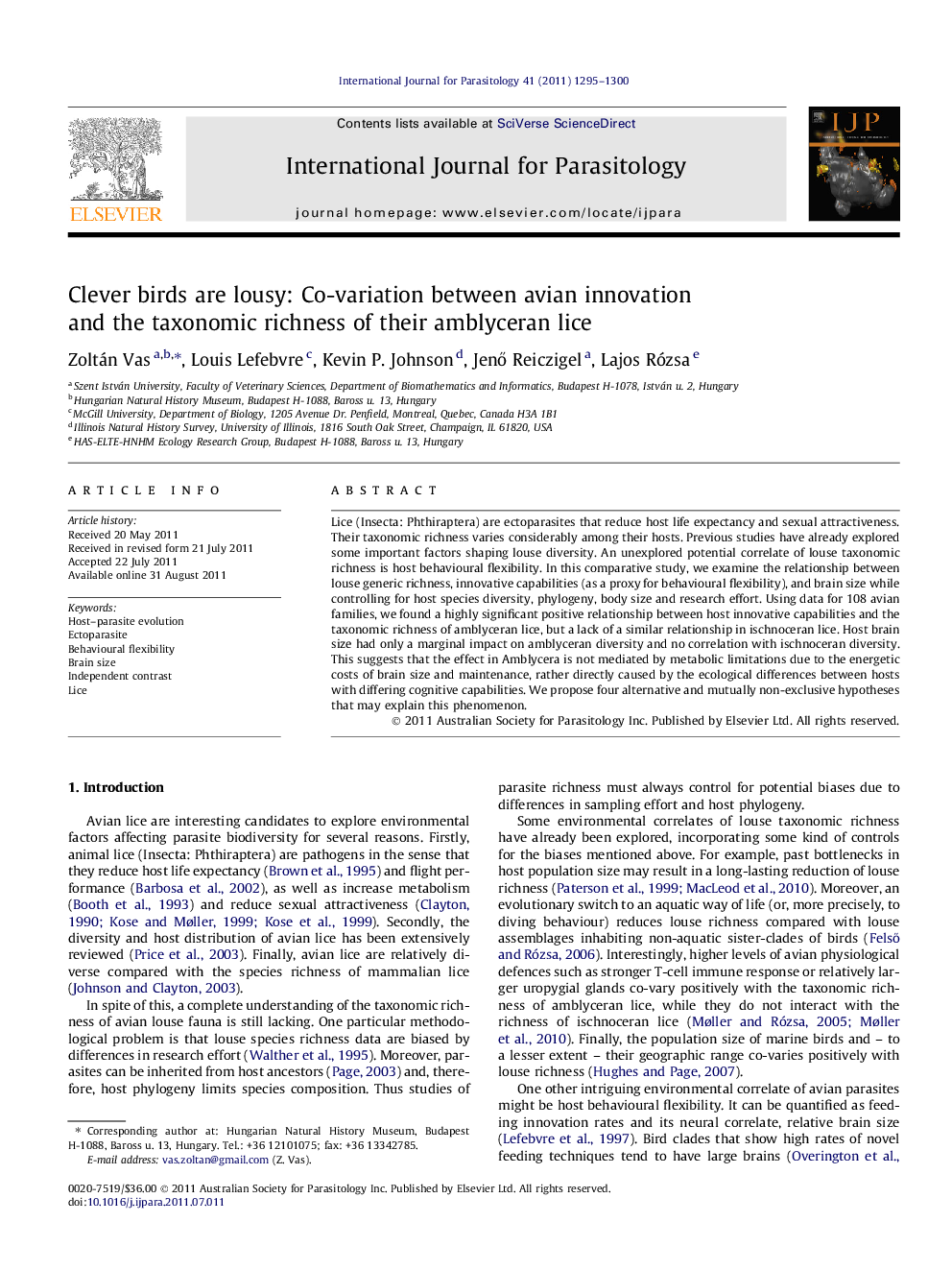| Article ID | Journal | Published Year | Pages | File Type |
|---|---|---|---|---|
| 2436314 | International Journal for Parasitology | 2011 | 6 Pages |
Lice (Insecta: Phthiraptera) are ectoparasites that reduce host life expectancy and sexual attractiveness. Their taxonomic richness varies considerably among their hosts. Previous studies have already explored some important factors shaping louse diversity. An unexplored potential correlate of louse taxonomic richness is host behavioural flexibility. In this comparative study, we examine the relationship between louse generic richness, innovative capabilities (as a proxy for behavioural flexibility), and brain size while controlling for host species diversity, phylogeny, body size and research effort. Using data for 108 avian families, we found a highly significant positive relationship between host innovative capabilities and the taxonomic richness of amblyceran lice, but a lack of a similar relationship in ischnoceran lice. Host brain size had only a marginal impact on amblyceran diversity and no correlation with ischnoceran diversity. This suggests that the effect in Amblycera is not mediated by metabolic limitations due to the energetic costs of brain size and maintenance, rather directly caused by the ecological differences between hosts with differing cognitive capabilities. We propose four alternative and mutually non-exclusive hypotheses that may explain this phenomenon.
Graphical abstractFigure optionsDownload full-size imageDownload high-quality image (39 K)Download as PowerPoint slideHighlights► A potential correlate of louse taxonomic richness is host behavioural flexibility. ► The relationships between louse richness, host innovation and brain size were examined. ► Data from 108 avian families were used. ► Positive co-variation of host innovative capabilities and amblyceran richness. ► Host brain size has only a marginal impact on amblyceran richness.
